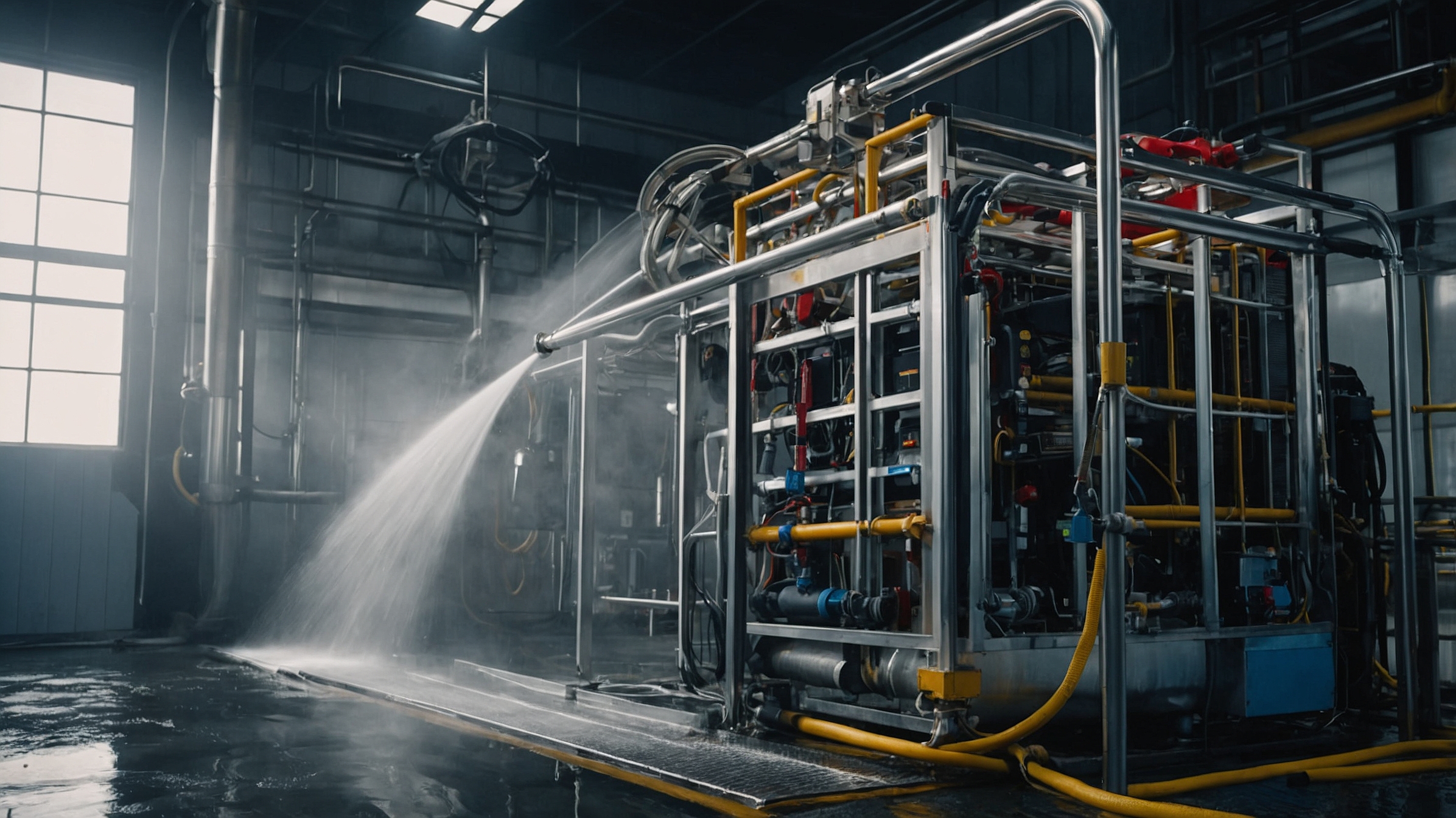| Deadline | 04-11-2024 voor 23:59 |
|---|---|
| Opdrachtgever | Veiligheidsregio Noord- en Oost Gelderland |
| Prijs | Deelname programma Startup in Residence; € 10.000,- vergoeding voor de pilotfase; Kans op een vervolgopdracht; Toegang tot het netwerk van mogelijk toekomstige opdrachtgevers. |
English text below
Briefing
De brandweer staat voor een probleem waarbij de huidige reinigingsmachine voor brandweerslangen niet geschikt is om de nieuwe slangen, die een stoffen buitenlaag hebben, effectief schoon te maken. Deze slangen, die door meerdere veiligheidsregio’s zijn of nog worden geïntroduceerd, vereisen een andere aanpak voor reiniging om hun levensduur en functionaliteit te waarborgen. De huidige machine slaagt er niet in om vervuiling zoals roet volledig te verwijderen en past daarom niet binnen de eisen op het gebied van arbeidshygiëne.
Gezocht: Een oplossing voor het effectief schoonmaken van nieuwe type brandslangen.
Naast de veiligheidsregio Noord- en Oost-Gelderland gebruiken zeker zeven veiligheidsregio’s in Nederland dit type slang. Hierdoor ontstaat er een dringende behoefte aan een aangepaste reinigingsmachine die aan de nieuwe eisen voldoet. Dit probleem moet snel worden opgelost om de operationele materiële capaciteit van de brandweer te waarborgen. Een nieuwe, gespecialiseerde reinigingsmachine is daarom cruciaal om aan deze nieuwe eisen te voldoen. Voor de VNOG betreft het in ieder geval twee machines, maar ook vanuit de overige regio’s is interesse in een goede oplossing.
De VNOG heeft als wens dat een nieuw te ontwikkelen type slangenwasmachine de stoffen buitenmantel van deze bundels effectief reinigt. Dat wil zeggen dat na reiniging de slangen ‘handschoon’ zijn, en er dus geen afgifte van vuil, roet of zand meer plaatsvindt. Dat is belangrijk om dat de slangen ook worden gebruikt bij oefeningen in ‘schone’ omgevingen. Daarnaast is het belangrijk dat de machine de slangen kan testen op lekkage, door middel van een druktest op circa 15 bar.
De machine moet in staat zijn om de volgende type slangen te reinigen en te testen:
– double jacket 38 mm 20 meter storz nok 52 mm
– double jacket 45 mm 20 meter storz nok 52 mm
– geweven slang 75 mm 20 meter storz nok 81 mm
– traditionele rubber slang 75 mm 20 meter storz nok 81 mm
VNOG is op zoek naar innovatieve, schaalbare oplossingen van startups. VNOG is niet op zoek naar communicatie strategieën, onderzoeken of diensten van adviesbureaus.
We zijn niet op zoek naar boekwerken met informatie en leidraad, dit past niet bij de werkwijze van de VNOG. De oplossing moet adequaat in te zetten zijn.
VNOG is bekend met het huidige aanbod aan slangenwasmachines. Wij zijn niet op zoek naar een machine die puur ontwikkeld is voor het reinigen en testen van het ‘ouderwetse’ type rubberen brandweerslang.
Updates
Updates will be published 21th of October
English Version
The fire department is facing an issue where the current hose cleaning machine is not suitable for effectively cleaning the new hoses, which have a fabric outer layer. These hoses, which have been or will be introduced by multiple safety regions, require a different cleaning approach to ensure their longevity and functionality. The current machine fails to completely remove contamination such as soot, and therefore does not meet labor hygiene standards.
Looking for: A solution for effectively cleaning the new type of fire hoses.
In addition to the North and East Gelderland Safety Region (Veiligheidsregio Noord en Oost Gelderland VNOG), at least seven safety regions in the Netherlands use this type of hose. This creates an urgent need for a modified cleaning machine that meets the new requirements. This problem must be solved quickly to ensure the fire department’s operational material capacity. A new, specialized cleaning machine is therefore crucial to meet these new standards. For VNOG, this involves at least two machines, but there is also interest in a good solution from the other regions.
VNOG desires that a newly developed type of hose washing machine can effectively clean the fabric outer layer of these hoses. This means that after cleaning, the hoses are ‘hand-clean,’ and there is no longer any release of dirt, soot, or sand. This is important because the hoses are also used during exercises in ‘clean’ environments. Additionally, it is important that the machine can test the hoses for leakage through a pressure test of approximately 15 bar.
The machine must be capable of cleaning and testing the following types of hoses:
- – Double jacket 38 mm 20 meters storz coupling 52 mm
- – Double jacket 45 mm 20 meters storz coupling 52 mm
- – Woven hose 75 mm 20 meters storz coupling 81 mm
- – Traditional rubber hose 75 mm 20 meters storz coupling 81 mm
VNOG is looking for innovative, scalable solutions from startups. VNOG is not looking for communication strategies, research, or services from consulting firms.
We are not looking for extensive documents with information and guidelines; this does not fit VNOG’s working style. The solution must be deployable in an effective manner.
VNOG is familiar with the current range of hose washing machines. We are not looking for a machine developed solely for cleaning and testing the ‘old-fashioned’ type of rubber fire hoses.










